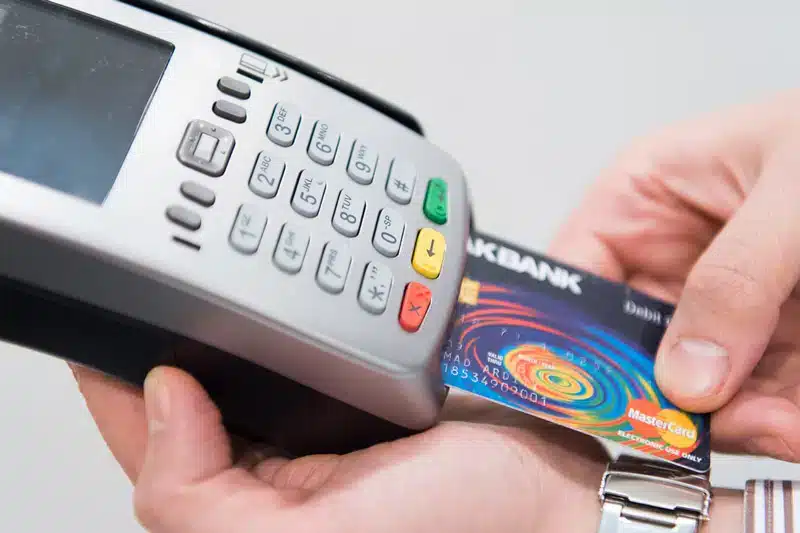Buy Now, Pay Later (BNPL) financing has grown from a consumer trend to a staple of digital commerce, offering flexibility to shoppers and higher conversions for merchants. While mainstream industries like fashion, electronics, and home goods have widely adopted BNPL models, high-risk sectors have traditionally been left behind. These industries—including CBD, travel, adult products, and digital services—face tighter financial scrutiny and higher chargeback exposure, making BNPL partnerships harder to secure. However, as payment technologies evolve and underwriting capabilities improve, high-risk businesses are beginning to explore how BNPL can drive growth while managing risk. With the right infrastructure and merchant account high risk support, BNPL has the potential to open new revenue streams for these merchants while still protecting processor integrity. For those prepared to integrate responsibly, the future of BNPL in high-risk spaces is no longer a distant possibility—it’s a strategic advantage waiting to be unlocked.
Why High-Risk Merchants Are Ready for BNPL Expansion
High-risk industries have historically been excluded from BNPL partnerships due to concerns over default rates, compliance risk, and chargeback volatility[1]. However, as consumer demand for flexible financing grows, these sectors are uniquely positioned to benefit from BNPL’s structure. High-risk merchants often deal with high-ticket or sensitive purchases that buyers hesitate to make in full upfront. Whether it’s a $500 nutraceutical subscription, a $3,000 international flight, or a discreet digital service plan, BNPL removes the upfront barrier and gives customers a path to commit. The ability to break large purchases into manageable installments increases basket sizes, improves checkout conversion rates, and reduces cart abandonment. For BNPL providers, the potential upside of working with high-risk merchants is too large to ignore—and platforms are beginning to build tools tailored to this segment.
The Challenges of BNPL in High-Risk Payment Processing
Despite its advantages, BNPL introduces new layers of complexity for merchants already navigating high risk merchant processing. BNPL shifts payment settlement timelines, introduces third-party liability, and affects chargeback procedures—all of which must be addressed by the merchant’s processor. Traditional merchant accounts operate on straightforward settlement logic: a payment is authorized, captured, and settled. BNPL models break that cycle by deferring payments or distributing them across weeks or months, requiring processors to handle new kinds of reconciliation. Merchants must also clearly disclose repayment terms, adhere to state-level lending regulations, and prevent fraud during application flows. Failing to manage these factors can increase decline rates or damage processor trust. For high-risk merchants, these added requirements mean BNPL adoption must be executed with precision, transparency, and processor alignment from the outset.
Custom Risk Modeling for Industry Context
High-risk merchants need BNPL providers that don’t rely on blanket approval logic. Providers should evaluate buyer risk using context-specific models that reflect real customer behavior in that industry.
Clear Documentation for Dispute Defense
BNPL platforms should help merchants generate detailed invoices, transaction logs, and digital contracts to protect against customer disputes or refund claims.
Fast Merchant Settlement Timelines
Some BNPL services delay merchant payouts until the customer completes all installments. High-risk businesses should seek platforms that front payments immediately and assume financing risk.
PCI-Compliant APIs for Seamless Integration
Merchants must be able to integrate BNPL flows into existing checkout pages without sacrificing security or performance. PCI-compliant APIs ensure that sensitive data is protected throughout the payment process.
Support for Multi-Currency and Cross-Border Transactions
Many high-risk businesses operate globally. A good BNPL partner supports payments in multiple currencies and across international borders without creating accounting headaches.
Pre-Authorization and Identity Verification Tools
Fraud prevention begins before approval. BNPL services should offer KYC, ID verification, and device fingerprinting tools to ensure installment loans aren’t misused or defaulted on intentionally.
BNPL as a Tool for Chargeback Reduction
While some fear that BNPL will increase disputes, it can actually support chargeback reduction when implemented with strong underwriting and user consent processes. BNPL providers often assume liability for the installment loan, meaning the customer disputes the charge with the lender—not the merchant. This shifts risk away from the business and onto the BNPL provider, provided that all documentation and service delivery evidence is intact. In many cases, the provider manages disputes independently, streamlining the resolution process. Additionally, installment payments create more documentation trails—payment terms, installment schedules, and digital contracts—which support merchants in the rare case they must engage in a dispute. For businesses suffering from high chargeback ratios, BNPL is increasingly seen as a stabilizing force, not a liability.
Benefits of BNPL Integration for High-Risk Merchants
When implemented properly, BNPL integration can transform high-risk commerce by boosting sales, smoothing cash flow, and improving customer satisfaction[2]. Below are several clear benefits that merchants in high-risk categories can expect when offering this payment option. By providing customers with the flexibility to pay over time, merchants can reduce cart abandonment rates and encourage larger purchases. Additionally, BNPL options can attract a broader customer base, including those who may be hesitant to commit to upfront payments.

BNPL Integration Benefits for High-Risk Merchants
Larger Average Order Value (AOV)
BNPL encourages customers to spend more by reducing the psychological barrier of large payments. This is especially valuable in high-risk industries where products and services are priced at a premium.
Improved Checkout Conversion Rates
Offering BNPL at checkout increases the likelihood that shoppers will complete a transaction. It reduces the number of cart abandonments due to high upfront costs or financing concerns.
Expanded Customer Reach
Many consumers—especially younger ones—prefer BNPL to traditional credit cards. Providing this option opens your business to segments that might otherwise avoid large purchases.
Reduced Refund Requests from Buyer Remorse
Because BNPL users make smaller initial payments, they are less likely to request refunds due to immediate buyer’s remorse. This can reduce return rates in high-risk verticals.
How Merchant Processing Companies Are Adapting
Forward-thinking merchant processing companies are evolving their infrastructure to support BNPL integrations. Historically, many processors viewed deferred payment models as risky, but with improved fraud scoring and lender-backed guarantees, they’re becoming more open to high-risk BNPL setups[3]. Some processors are even launching their own installment platforms or white-label BNPL tools to give merchants more control. This ecosystem shift benefits high-risk merchants, who now have more options for embedding BNPL without relying solely on third-party services. Additionally, processors are developing better reconciliation logic, allowing installment payments to flow into merchant CRMs and accounting platforms with minimal manual input. This trend represents a shift toward deeper collaboration between payment tech providers and the merchants they serve.
The Role of BNPL in Long-Term High-Risk Payment Strategy
Integrating BNPL isn’t just a feature—it can be a core element of a merchant’s strategic payment plan. For high-risk businesses, which often operate on slim margins and face uphill battles with traditional banks, BNPL provides an alternative route to revenue stability. When paired with dynamic fraud controls, solid documentation practices, and smart user flows, BNPL minimizes risk while unlocking higher customer engagement[4]. This model also introduces more consistent cash flow, since installment platforms often pay merchants upfront and manage customer collections. Long-term, high-risk merchants that build BNPL into their infrastructure position themselves as competitive, modern, and customer-focused—even in industries that historically struggled with payment accessibility.

Recurring Revenue Enablement via BNPL
Subscription-based high-risk products benefit from recurring billing structures enabled by BNPL. Customers commit to longer-term packages without financial strain, and merchants see increased retention.
Improved Processor Trust Through Reduced Chargebacks
Lower chargeback ratios help rebuild trust with payment providers. BNPL’s structured billing reduces the need for disputes, improving the merchant’s risk profile over time.
Scalable Promotion of High-Ticket Items
BNPL makes it easier to promote expensive packages, bundles, or upsells—driving average order value and creating marketing opportunities that didn’t exist with single-payment models.
Behavioral Data Insights from Installment Trends
Analyzing how customers use BNPL—what plans they choose, what limits they hit—provides insights into price sensitivity and helps shape product development and pricing tiers.
Upsell Opportunities Within Installment Portals
Some BNPL platforms allow merchants to present add-ons or upgrades during the installment cycle, creating new revenue streams post-purchase.
Brand Positioning as Customer-Centric
Offering BNPL positions high-risk merchants as flexible and accessible, improving customer loyalty and modernizing the brand image in a competitive digital landscape.
Conclusion
Buy Now, Pay Later is no longer reserved for low-risk, mainstream commerce. With evolving infrastructure, new merchant processing company policies, and stronger fraud tools, high-risk merchants can now confidently integrate BNPL into their payment ecosystems[5]. Doing so not only increases order volume and customer satisfaction—it also contributes to long-term chargeback reduction, improved processor relationships, and more scalable operations. From securing a merchant account high risk setup to choosing the right BNPL partner, this transition requires planning—but the payoff is real.
At Payment Nerds, we help high-risk merchants navigate BNPL integration from start to finish. Whether you’re exploring your first deferred payment system or optimizing an existing model, our experts offer proven strategies for secure, compliant, and profitable execution in complex industries.
Sources
- Forbes. “The BNPL Expansion into High-Risk Categories.” Accessed April 2025.
- Bankrate. “How Buy Now, Pay Later Is Changing eCommerce.” Accessed April 2025.
- McKinsey & Company. “Fintech and the Future of Installment-Based Commerce.” Accessed April 2025.
- PCI Security Standards Council. “BNPL Platforms and PCI Compliance.” Accessed April 2025.
- TechCrunch. “BNPL Innovation in High-Risk and High-Value Markets.” Accessed April 2025.











